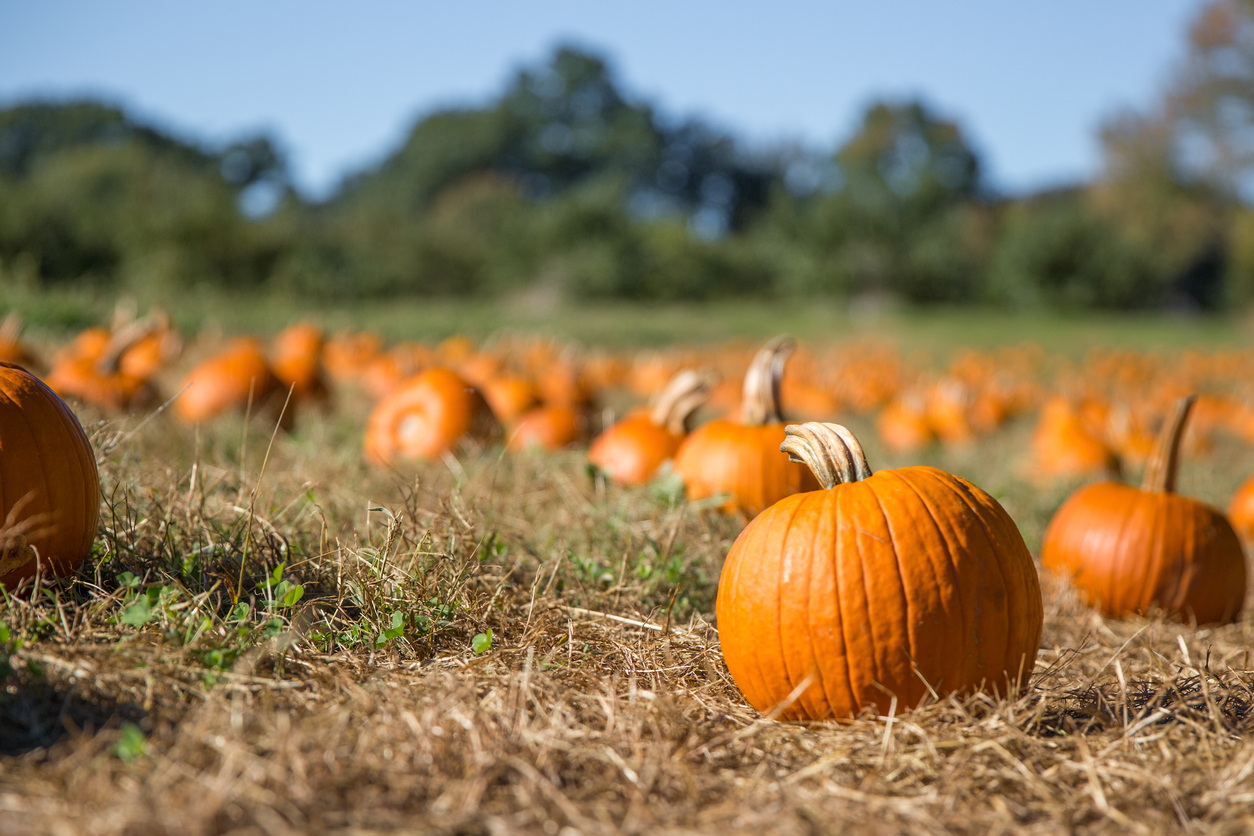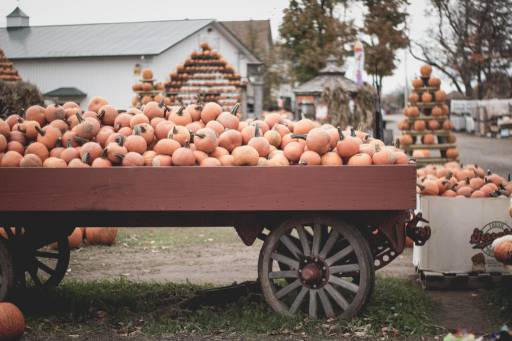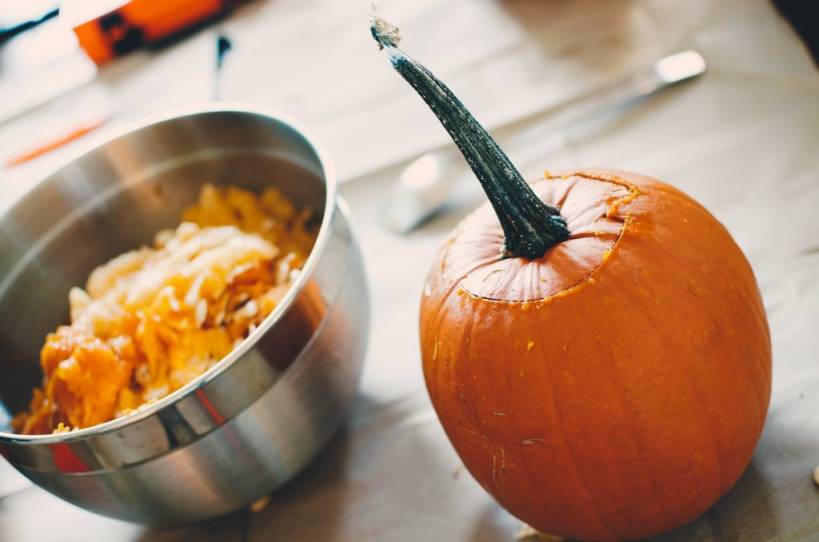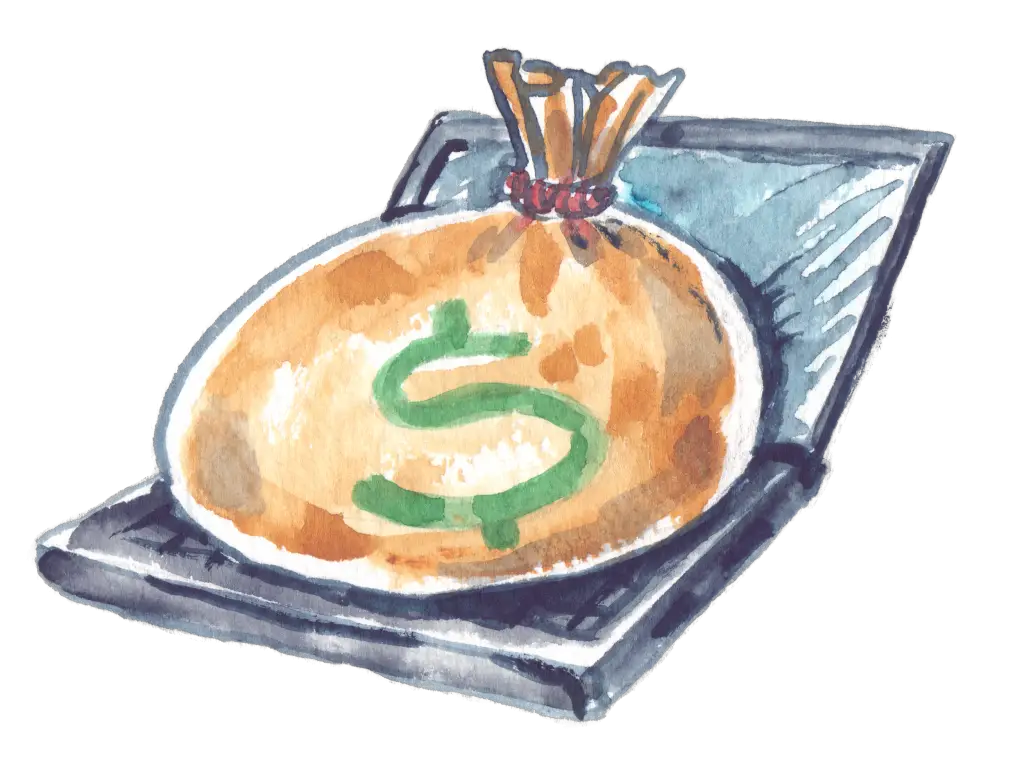
CommonCentsMom.com is advertiser-supported: we may earn compensation from the products and offers mentioned in this article. However, any expressed opinions are our own and aren't influenced by compensation. The contents of the CommonCentsMom.com website, such as text, graphics, images, and other material contained on this site (“Content”) are for informational purposes only. The Content is not intended to be a substitute for professional financial or legal advice. Always seek the advice of your Financial Advisor, CPA and Lawyer with any questions you may have regarding your situation. Never disregard professional advice or delay in seeking it because of something you have read on this website!
It might not seem like it, but fall is right around the corner. Before you know it, you’ll be eating and drinking pumpkin spice everything and carving pumpkins until you have so many pumpkin seeds you won’t know what to do with them. But before you break out the carving tools, you might want to find out how to keep pumpkins from rotting. As fun as it is to get in the Halloween spirit and carve pumpkins to your heart’s content, the sad truth is that, once you take a knife to them, they are that much more prone to quickly rotting.
According to NPR, pumpkins can last up to 12 weeks when outside on their own. Carved jack-o-lanterns, on the other hand, have a porch life of five to 10 days. Luckily, there are steps you can take to ensure the longevity of your outdoor pumpkins. The whole idea of carving pumpkins or just having them outside is to fully embrace the fall season. You might be longing for the days of humidity and swimsuits by the time November rolls around, but there is something so seasonal about carving pumpkins.
So you don’t have to rack your brain wondering how to keep your pumpkins from rotting, take note of these tips to keep your porch pumpkin mush-free for as long as possible.
Remember That Bleach Is Key
Before you even carve your perfect pumpkin, mix together a solution of one teaspoon of bleach with one quart of water. Then, clean all over the outside of the pumpkin with the solution and allow it to dry thoroughly before you start to carve it. After you carve it, place your pumpkin in a bath of water and ⅔ cup of bleach to give it a proper cleaning.
Bleach solution can also be used to clean other porous items, such as fruit trees. Just make sure to rinse the item thoroughly before you put it back in the soil.
With a spray bottle of water and a good scrubbing, you can also keep most pumpkins from rotting. However, if you have a particularly big or stubborn pumpkin, you might need to resort to a little more drastic measures. For example, petroleum jelly (such as from Vaseline) can be applied to the whole pumpkin’s skin to prevent it from rotting. However, this method is not recommended for organic pumpkins, as petroleum jelly is not permitted in organic farming.
Vegetable oils and olive oils can also be used as a preventative measure. However, these oils can become rancid over time, so it is important to use them sparingly and to replace them regularly. DIY pumpkin preservation solutions can also be made using ingredients like sugar, honey, and vinegar. However, these solutions can also be messy and difficult to apply, so it is important to be careful when using them.
Treat It Like Your Favorite Houseplant — Sort Of
Part of the reason why pumpkins dry out so easily is because of the lack of moisture they have once they are cut into or after sitting out in temperatures that sometimes exceed 55 degrees. One thing you can do to ensure that your pumpkin stayed hydrated is spray it with the water and bleach mixture, or the pumpkin preservation sprays every day.
Harvest the Pumpkin at the Right Time
There’s a right time to choose your pumpkin? Yes, especially if you want it to last as long as possible. All pumpkins should be mature and have a deep, solid color. The outer shell should be hard, and not easy to puncture with a fingernail.
It’s best to buy your pumpkin on a dry, sunny day. Make sure it has a solid stem, and no soft spots anywhere on the outer shell.
Buy Local

Lesly Juarez/Unsplash
As any hipster will tell you, buying local is rarely a bad idea. Such is the case with pumpkins. They can go through a lot when in transit to big box companies that typically have dozens of them on display for prices that are barely cheaper than you would find at a pumpkin patch. But if you opt for a fresh, best pumpkin right from the source, you are more likely to have one that was more recently picked and, in turn, a lot fresher.
Stay Away From Candles
Real candles have flames that warm and eventually work in drying out pumpkins. This can lead to faster rotting symptoms. So instead of using flammable or real candles, try battery-operated tea lights to light up the inside of your spooky jack-o-lantern each night. Flameless candles, an airtight container, and keeping the pumpkin away from moisture are all great ways to keep your pumpkins from rotting.
Keep The Stem Intact
NPR also recommends that once you find a pumpkin with a green and sturdy stem, keep the stem attached to the pumpkin. It might be your instinct as a self-proclaimed pumpkin carving pro to cut a hole in the top first in order to clean out the inside, but if you keep the stem intact, you keep important nutrients in the pumpkin to help keep it fresher for a little while longer. Instead of cutting a hole in the top, opt for a hole in the bottom, which can provide you with the same method of cleaning put the pumpkin.
Soak the Pumpkin
If you’re like some people, you may leave your pumpkin out for the wildlife. In that case, you’ll want to use a preservation method that’s safe for animals.
You can soak the pumpkin in the bathtub in a mix of water and vinegar. This method ends up pickling the pumpkin and may keep away critters who don’t like the taste or smell of vinegar. Preserving your gourd with this method is safe for the environment and any critters that can get past the solution’s taste and smell!
- Fill a tub with water, with a mixture of 10 parts water and 1 part vinegar.
- Immerse the pumpkin and allow it to soak for about 30 minutes.
- Take it out of the solution and allow it to air dry, then put the pumpkin outside!
Use a Silica Packet
Another way to keep your pumpkin fresh longer is to put a silica packet inside. The packets contain a substance that works to absorb moisture and keep things dry. You can find silica packets inside the boxes for new shoes, purses, and other products. They can also work inside a pumpkin!
Put Some Elbow Grease Into Cleaning It Out

Kelly Sikkema/Unsplash
It should go without saying, but thoroughly cleaning out your pumpkin goes a long way. Not only are small animals more likely to gnaw away at your pumpkin if there are tons of seeds and innards still inside, but those parts help contribute to faster rotting. Not to mention the greater possibility of small bugs and bacteria being attracted to these rotting parts. Make sure you completely clean out the inside before you consider it a job well done.
Remember That It’s All About Timing
No matter what you do to prevent your pumpkin from rotting, it’s a natural process in the life of the pumpkin once it leaves the ground. The rotting process starts with the pumpkin’s water content. As the pumpkin rots, the water inside it turns to a thick sludge that mixes with the pumpkin’s cellulose and hemicellulose fibers. This mixture is what gives pumpkins their characteristic squishy texture. Soft spots in the pumpkin also become breeding grounds for mold and bacteria, which will quickly cause the pumpkin to rot. Uncarved pumpkins are especially susceptible to rotting, so it’s important to keep them stored properly if you don’t plan on eating them right away.
Don’t carve your pumpkin too early, as you can expect it to last about a month once it is carved. So if you want your pumpkin to last until Halloween to make the most out of your spooky carved design, then try not to get started until the start of October.
Halloween pumpkin carving is all fun and games until you have to clean up the dunk and mess. And if you’re like most people, that mess will include pumpkin guts, seeds, and goo. Not to mention the fact that, if you’re not careful, your pumpkins will end up with rot on the inside. The front porch will be covered in pumpkin guts, and the smell of rotting pumpkins will permeate your home for weeks on end.
Pumpkins rot from the inside out, so the best way to prevent this is to keep them from rotting in the first place. Paper towels or a damp cloth can help to soak up excess moisture, but if you really want to keep your pumpkins from rotting, you’ll need to take some preventative measures. Gourds, while not as popular as pumpkins, are also susceptible to rotting. Direct sunlight and moisture are the two main culprits in pumpkin rot, so make sure to keep your pumpkins out of the sun and away from water. And, of course, don’t forget to clean them up after you’re done carving!
When it’s all said and done, preservation is key. It is all about keeping up with your pumpkin’s maintenance, as silly as that might be. It isn’t a bouquet of freshly picked flowers and it isn’t a fern that requires regular attention, but a pumpkin is a vegetable that was once picked from a garden, or patch. It’s only natural for pumpkins to succumb to rotting, but with these easy tips, you can do your part in keeping pumpkin fresh, away from rotting before the fall is even over.







